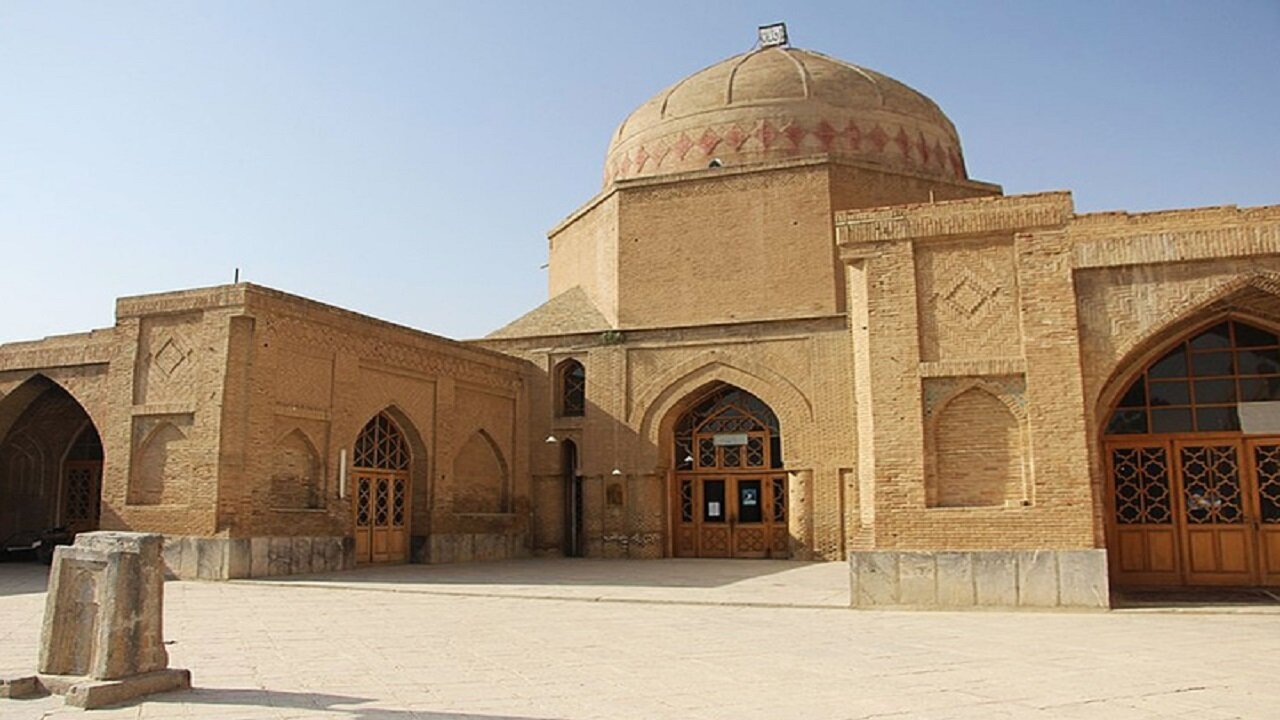Minister announces allocation of funds for 12th-century mosque restoration

TEHRAN - Cultural Heritage, Tourism, and Handicrafts Minister Ezatollah Zarghami has announced the allocation of necessary funds for the restoration of the 12th-century Jameh Mosque of Golpayegan.
Zarghami made the remarks on Wednesday during his visit to the ancient mosque which is located in the city of Golpayegan in Isfahan province.
The official highlighted the mosque’s historical and architectural significance, saying, “Undoubtedly, this magnificent historical mosque, with its more than 900 years of history and its striking similarities to many other ancient mosques across Iran, stands as a clear and obvious symbol of the rich Islamic civilization in western Isfahan province.”
Issues caused by moisture infiltration in the mudbrick walls, roofs, and domes should be top on the agenda for the upcoming restoration project, Zarghami underlined.
“This year, more than 30 billion rials (some $50,000) have been allocated for the restoration of this mosque. If necessary, additional funds will be provided, especially to complete the restoration of its grand dome,” Zarghami said.
The minister emphasized the importance of creating conditions that would allow people to comfortably perform their prayers in the 900-year-old mosque, just as their ancestors did.

“We will work with our colleagues in the ministry and at the provincial directorate to increase the restoration budget for Golpayegan,” Zarghami added.
During his visit to Golpayegan, Zarghami also inspected other historical buildings in the city. He admired Golpayegan’s rich history, describing it as one of the main centers of Islamic civil development in western Isfahan province.
According to Archnet, the mosque is roughly rectangular in design and consists of vaulted and domed prayer halls enveloping the four sides of a rectangular courtyard. It is oriented northeast-southwest and measures about seventy-three meters by forty-four meters on the exterior.
Measuring twenty-six meters wide and thirty-two meters deep, the courtyard is symmetrically arranged with two grand square iwans to the northeast and southwest, and two small iwans to the northwest and southeast.
A square dome chamber or sanctuary is constructed entirely of brick and is opened on three sides with vaulted archways flanked by embedded columns. The east and north corners of the chamber have thick double columns marking the corner, flanked by narrow archways cut into the adjoining walls that are topped by arched windows.
Centered on the qibla wall, the three-sided mihrab niche of the Seljuk dome chamber has stucco work, topped by a blind arch carved with inscriptions and an inscription plaque.
The interior surfaces are adorned with brick panels with intricate geometric motifs and geometric compositions in Kufic letters. The exterior of the dome structure is left plain, except for a ring of large diamonds encircling the dome’s base.
The single minaret of the mosque is located outside the precinct, behind the qibla wall, and also dates from the Seljuk period. Its octagonal base is joined by a tall cylindrical shaft which is topped by a narrow turret placed off-center.
The terms Jameh Mosque, Masjed-e Jameh, or Friday Mosque are used in Iran for a grand communal mosque where mandatory Friday prayers are performed: the phrase is used in other Muslim countries but only in Iran does it designate this purpose.
Golpayegan is situated some 180 kilometers west of Isfahan.
AM
Leave a Comment